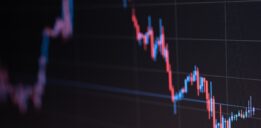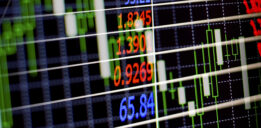What Was the Dotcom Bubble?
What the dotcom bubble was, and how it began, isn’t too difficult to explain: The dotcom disaster was a speculative bubble that covered 1995 to 2001. During this period, Internet stocks, which were both novel and difficult to value, soared as investors sought growth stocks and were afraid to miss out on the rally.
What exactly caused the dotcom bubble to burst in such an epic fashion, on the other hand, isn’t quite as easy to pin down. But the same factors that helped the dotcom bubble to burst 2000 are in play today.
In general, the 1990s were one of the best periods of growth in the United States. Gross domestic product (GDP) growth in the 1990s might have averaged just 3.3%, but it was a decade marked by serious expansion. In 1991, U.S. GDP was -0.07 but, by 1999, it was 4.68.
As one might expect, the stock market followed a similar trajectory. After all, stocks are a barometer on the health of the U.S. economy, so if the economy is doing well, earnings are up, and so too are stock valuations.
On the first day of trading in January 2000, the tech-heavy NASDAQ was at 452. By March 20, 2000, the day the NASDAQ peaked during the dotcom craze, the index had soared 1035% to a record intra-day high of 5132.
The S&P 500 had entered 1990 at 353.40 and, by March 10, 2000, it had soared by a more modest 300% to 1413.38.
During the second half of the 1990s, stocks soared and the Federal Reserve’s key lending rate hovered above five percent. Investors, looking for new ways to make money, focused their attention on Internet stocks.
The Internet was in its infancy but, by all accounts, the potential for growth was unlimited. Venture capitalists poured millions of dollars into Internet companies that might have been founded on decent ideas, but had no proven business strategy, and—in most cases—were losing money fast. Overzealous management burned through money in efforts to grow their businesses and take them public.
Further down the chain were retail investors, who were looking for hot stocks to invest in. This, coupled with the untapped potential of the Internet, helped fuel the tech and Internet initial public offering (IPO) boom.
Many tech and Internet stocks were hard to value because they hadn’t generated a single penny in revenue. But again, the potential was there. Fundamentals like revenue, earnings, and valuations were ignored in favor of technicals and growing optimism, and the fear of missing out on the next big thing. That’s even though there hadn’t really been any proven “big things.”
In 1999, 457 companies went public, most of which were Internet stocks. Of those, 117 (25%) doubled in price on the first day of trading. The most infamous Internet IPO of the late 1990s was theglobe.com, inc. (OTCMKTS:TGLO), a primitive social media site company.
The company went public on November 13, 1998 with a set offer price of $9.00 per share. Investors went a little crazy; the stock opened at $87.00 and hit an intra-day high of $97.00 (for a one-day spread of 977%) before closing at $63.50. Two years later, it was delisted from the NASDAQ because it failed to meet the $1.00 minimum share price requirement.
Dotcom Bubble Stretched Thin by Taxpayer Relief Act of 1997
It wasn’t just irrational exuberance that sent stocks and Internet stocks soaring. The U.S. federal government has to take some of the blame. The Taxpayer Relief Act of 1997 lowered the maximum tax rate on capital gains for individual investors from 28% to 20% for equity held for more than 18 months. The legislation was signed on August 5, 1997, but was retroactive to May 7, 1997. (Source: “H.R.2014 – Taxpayer Relief Act of 1997,” Congress.gov, last accessed March 22, 3017.)
Thanks, in part, to lower capital gains taxes, investors took greater risks to beef up their retirement funds. Stock return volatility increased significantly after 1997. In particular, the tax rate reduction impacted non-dividend paying firms and those with large unrealized capital losses.
The Taxpayer Relief Act of 1997 didn’t have any impact on dividend tax rates; they stayed the same. This motivated investors to favor non-paying dividend stocks, like Internet stocks, which were less established but were also experiencing the most growth.
Between August 5, 1997 and March 10, 2000, the NASDAQ advanced 218%. Over the same time frame, the S&P 500 was up 47%, while the dividend-strong Dow Jones Industrial Average (DJIA) was up a healthy, but comparatively underwhelming, 21%.
The good times ended in May 2003 with the signing of the Jobs and Growth Tax Relief Reconciliation Act of 2003, which set the tax rates for dividends and capital gains to be equal to one another, just like they had been from 1986 to 1997. (Source: “Jobs and Growth Tax Relief Reconciliation Act of 2003,” Congress.gov, last accessed March 22, 2017.)
Stock Valuations Soar
Internet stocks were vaulting higher on a daily basis. A company didn’t even need to announce anything; investors were afraid to miss out.
According to some estimates, it is thought that 5,000 people quit their jobs to trade full-time at day trading firms. While that number isn’t massive, when you add those who used the Internet to trade from home or the office, the number is closer to five million. (Source: “Day Trading: It’s a Brutal World,” Time, August 9, 1999.)
A great idea might have been behind most Internet stocks at the time but, over the long run, an idea can never take the place of fundamentals. During the dotcom era, investors were more enamored with technicals and momentum than they were with traditional things like…fundamentals. It sent valuations into the stratosphere and stocks became wildly overpriced.
Just how horrific were valuations? According to the cyclically adjusted price-to-earnings (CAPE) ratio, which compares current prices to average earnings over the previous 10 years, the S&P 500 was overvalued by 181.5%. In 1999, the ratio stood at 45. The long-term average is 16. This means that, for every $1.00 in earnings, an investor was willing to pay $45.00. (Source: “Online Data Robert Shiller,” Yale University, last accessed March 22, 2017.)
But was it really all that bad? Yes. Yes, it was.
In 1929, just before Black Tuesday, the ratio was 30, implying that the S&P 500 was overvalued by 87.5%. On March 22, 2017, the ratio was at 28.93, the third-highest level ever.
What Caused the Dotcom Bubble to Burst?
During the dotcom craze, it didn’t matter if an Internet company was actually making money or ever had any intention of reporting a profit. The fear of missing out was huge. IPOs helped create millionaires overnight and sent the NASDAQ to record levels.
Like all economic cycles, it had to end. But no-one really expected it to end so dramatically. With the wisdom of hindsight, we can see that the steam was taken out of the bull market.
In the early part of the 1990s, the Fed lowered interest rates to combat the recession, making it cheaper to borrow money. A familiar tale. What venture capitalist and investor doesn’t like to borrow cheap money and throw it at a start-up or red-hot stock market?
Again, it doesn’t matter if a dotcom stock is making money, is saddled with debt, and has nothing to take to market; the potential was there.
But the economy never stands still. Annual GDP increased throughout the 1990s and, from 1997 to 1999, hovered around 4.5%. In an effort to help moderate economic growth, the Fed started to raise interest rates. From 1999 to early 2000, the Fed raised its key lending rate six times.
But what exactly caused the dotcom bubble to burst in 2000—or, at least start seeping air—on March 10, 2000? No one knows why stocks started to retreat on that particular day. No doubt, analysts attributed it to a slight correction. The effects of the dotcom bubble were felt around the world.
Amidst all the static and economic discussions, what we do know is that investors finally clued into the fact that the Internet companies with nosebleed valuations that they invested in weren’t making money, and were saddled with debt.
Moreover, Internet companies looking for new capital found it difficult to attract new investors. Higher interest rates didn’t help. Investors ran for the exits, and once-high-flying Internet stocks started to go broke.
On March 10, 2000, the NASDAQ hit an all-time intra-day high of 5132.52. The September 11, 2001 terrorist attacks put an end to a decade of growth. On October 9, 2002, the NASDAQ bottomed at 1114.11, having lost 78% of its value.
Dotcom Bubble Timeline
| Year | Event |
| 1994 | Amazon founded |
| 1995 | Craigslist, Yahoo!, eBay, and MSN founded |
| 1996 | eToys.com founded |
| 1997 | Pets.com founded |
| 1998 | Flooz, Webvan, and Google founded |
| 2000 | NASDAQ, S&P 500, and Dow peak |
| March 10, 2000 | NASDAQ Peaks at 5132.52 |
| March 13, 2000 | Markets Open 4% Lower |
| March 24, 2000 | S&P 500 Peaks at 1553.51 |
| November 2000 | Pets.com closes |
| March 2001 | eToys.com files for bankruptcy |
| July 2001 | Webvan disappears |
| August 2001 | Flooz flops |
| October 11, 2002 | Nasdaq bottoms at 1114 |
Have We Learned Anything from the Dotcom Bubble?
Have we learned anything from the events of the 2000 dotcom bubble? It doesn’t look like it. The broader markets have been on a tear for eight years, but the underlying strength of the second-longest bull market in history has not come from strong earnings growth, but from artificially-low interest rates.
While the bull market stalled in the lead-up to the November 2016 election, the stock markets went on a tear following Donald Trump’s election win. In the four months following the U.S. presidential election, the S&P 500 advanced an additional 14% while the DJIA increased 18%, blowing through both the 20,000 level and 21,000 mark. Both indexes did in four months what many analysts were forecasting for the entire year.
This has sent stocks—which President Trump said on the campaign trail were in a big, fat, ugly bubble—even higher. Investors are afraid of missing out on the recent rally and have sent stocks to their third-highest valuation in history: followed only by 1929 and the dotcom bubble.
The sell-off will begin, but no one knows when, or what will precipitate it. Analysts will say it’s a slight correction or profit taking, but we all know how it will end.







